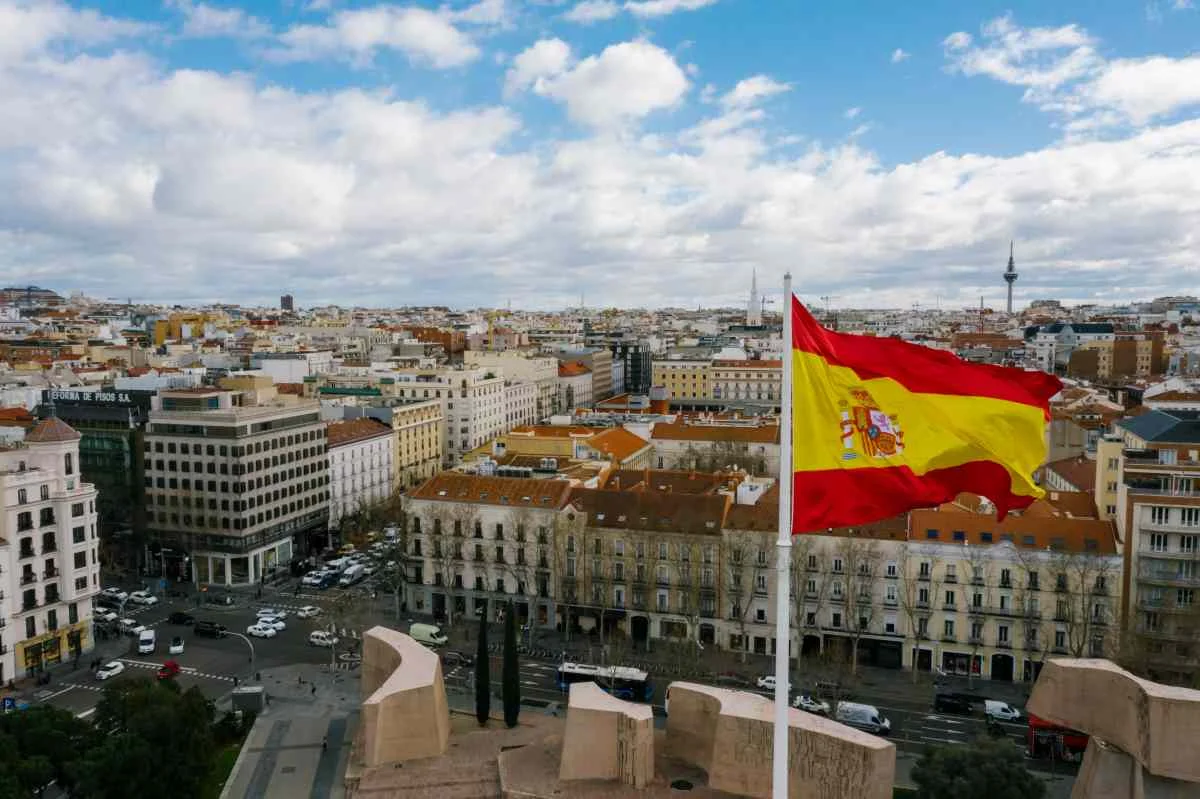In the vibrant mosaic of architectural styles that grace the Philippines, one captivating style stands out – Spanish architecture. It is a style that has left an indelible mark on the country’s urban landscape, blending seamlessly with its diverse cultural heritage.
Modern Spanish architecture is a captivating blend of tradition and innovation, drawing upon a rich history of Spanish colonial design while incorporating contemporary elements to create unique structures. As one gazes upon a modern condo in Las Pinas, a journey through time and culture begins. The unique charm of Spanish architecture, with its rich heritage and artistic flair, unfolds before our eyes. Let’s delve into the enchanting world of modern Spanish architecture and uncover what makes it so alluring.
What is Spanish Architecture Called?
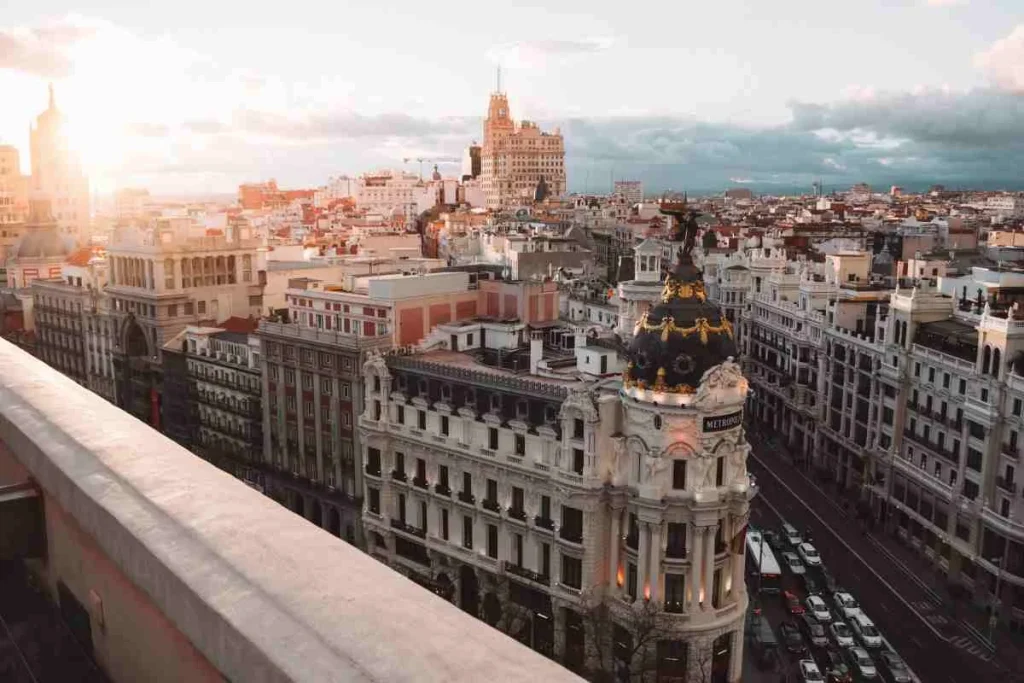
Spanish architecture is not confined to a single name but encompasses several distinct styles. Some of the most prominent ones include Spanish Colonial, Mission Revival, and Spanish Revival architecture. These styles incorporate Spanish design principles, offering a glimpse into the grandeur of Spanish culture both in Spain and its former colonies.
The Allure of the Spanish Architecture
Spanish architecture, with its unique blend of influences, carries a rich legacy that transcends time and borders. It is renowned for its harmonious fusion of Moorish, Romanesque, Gothic, Renaissance, and Baroque elements. This distinctive style has not only stood the test of time but has also significantly contributed to the architectural heritage of the Philippines.
Spanish Colonial architecture, deeply rooted in the Philippines’ colonial history, is based on simplicity and functionality. The use of indigenous materials such as hardwood, bamboo, and nipa palm leaves reflects the adaptation of Spanish design to local resources and climate.
Famous Structures in Spain
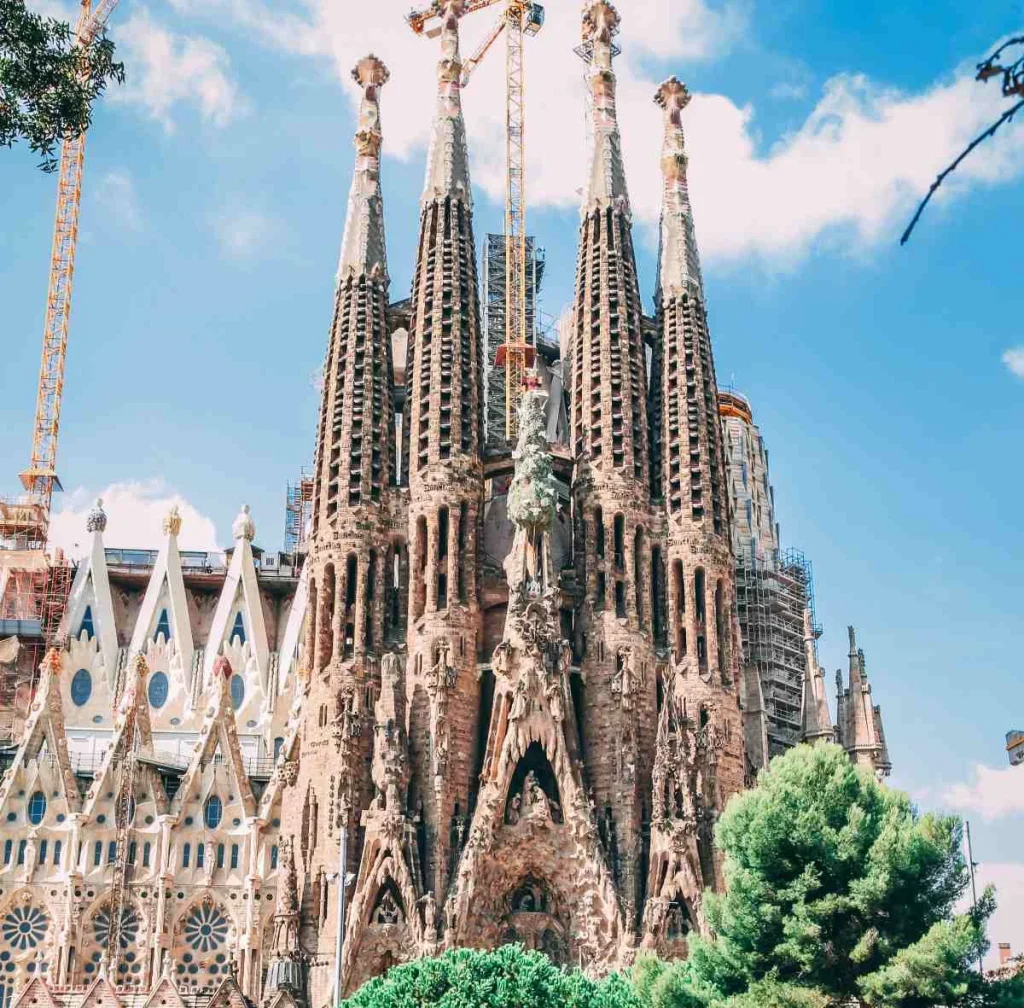
photo of Sagrada Familia in Barcelona
Spain is home to some of the world’s most iconic architectural wonders. These structures showcase the diverse facets of Spanish architecture. In Spain, a wealth of contemporary architectural marvels abound, often drawing inspiration from the surrounding landscapes, historical narratives, and the unique cultural legacies of individual regions.
Palacio de Congresos de Zaragoza
The Palacio de Congresos de Zaragoza is a modern building located in Zaragoza, Spain. It is significant to Spanish architecture because it showcases a blend of contemporary design and innovative construction techniques. The building’s striking exterior features a dynamic and futuristic appearance, with its unique metallic shell and glass façade. Inside, it provides a functional space for conferences and events, demonstrating Spain’s commitment to modern architectural design and its ability to host international gatherings in style.
Sagrada Familia in Barcelona
The Sagrada Familia is an awe-inspiring masterpiece of Spanish architecture, known for its unparalleled grandeur and unique design. Designed by the visionary architect Antoni Gaudí, this basilica is the epitome of Spanish Modernism, a style that embraces a blend of Gothic and Art Nouveau elements. It stands as one of the most ambitious and renowned architectural projects globally, marked by its towering spires, intricate facades, and the remarkable interplay of light and space within its interior.
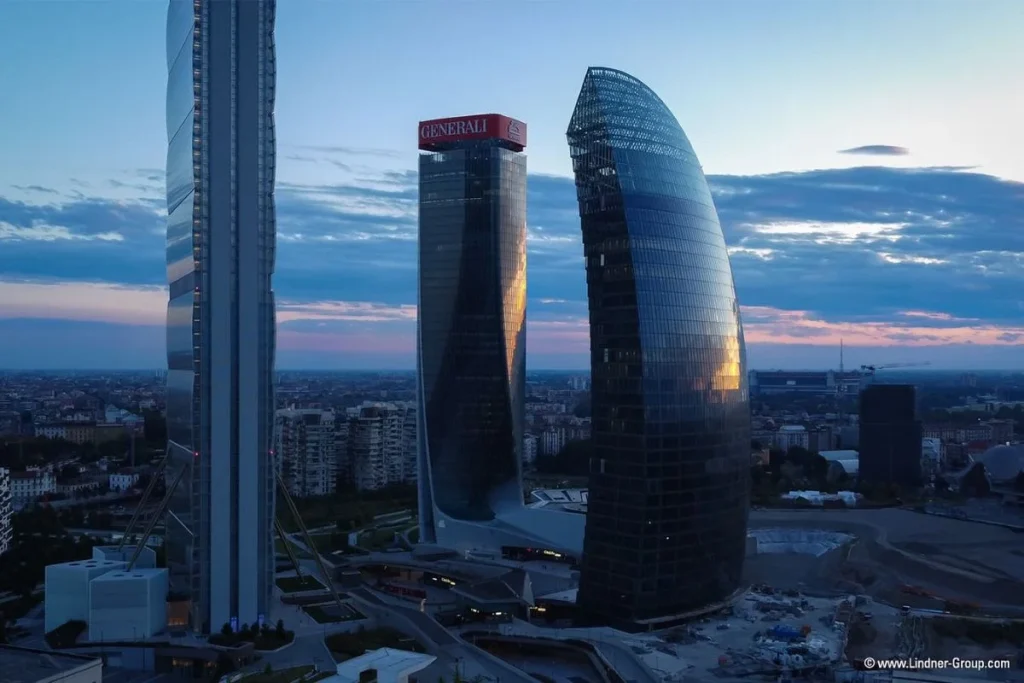
photo of Torre PwC from lindner-group.com
Park Güell
Park Güell, another masterpiece by Antoni Gaudí, is a harmonious fusion of Spanish architecture and natural aesthetics. Located in Barcelona, this public park features whimsical mosaics, vibrant ceramic pieces, and organic forms that seamlessly blend into the surrounding landscape. It’s a celebration of Gaudí’s distinctive Spanish Modernisme style, where every element seems to come alive with a sense of playfulness and imagination.
Torre PwC
The Torre PwC, formerly known as Torre Sacyr Vallehermoso, is a distinctive skyscraper located in Madrid, Spain. One of its unique features is its shape, which resembles an inclined cylinder, giving it a sleek and modern appearance. The tower stands tall at 236 meters (774 feet) and has 58 floors, making it one of the tallest buildings in Spain. Additionally, its façade is covered in glass panels and stainless steel, reflecting the surrounding cityscape and adding to its striking visual impact. This iconic building serves as a symbol of modern architecture and innovation in the heart of Madrid.
Torre Agbar
The Torre Glòries, formerly known as Torre Agbar, is a distinctive skyscraper located in Barcelona, Spain. What makes it special is its unique and futuristic design, resembling a glistening glass bullet or a rocket. It stands at a height of 144 meters (472 feet) and has 38 floors. Designed by architect Jean Nouvel, it was completed in 2005 and has become an iconic symbol of modern Barcelona. The tower is significant for its innovative use of materials and sustainable features, such as its energy-efficient glass facade and a system that collects and recycles rainwater for irrigation. It serves as a prominent example of contemporary architecture and is an integral part of Barcelona’s skyline.
Features of Modern Spanish Architecture
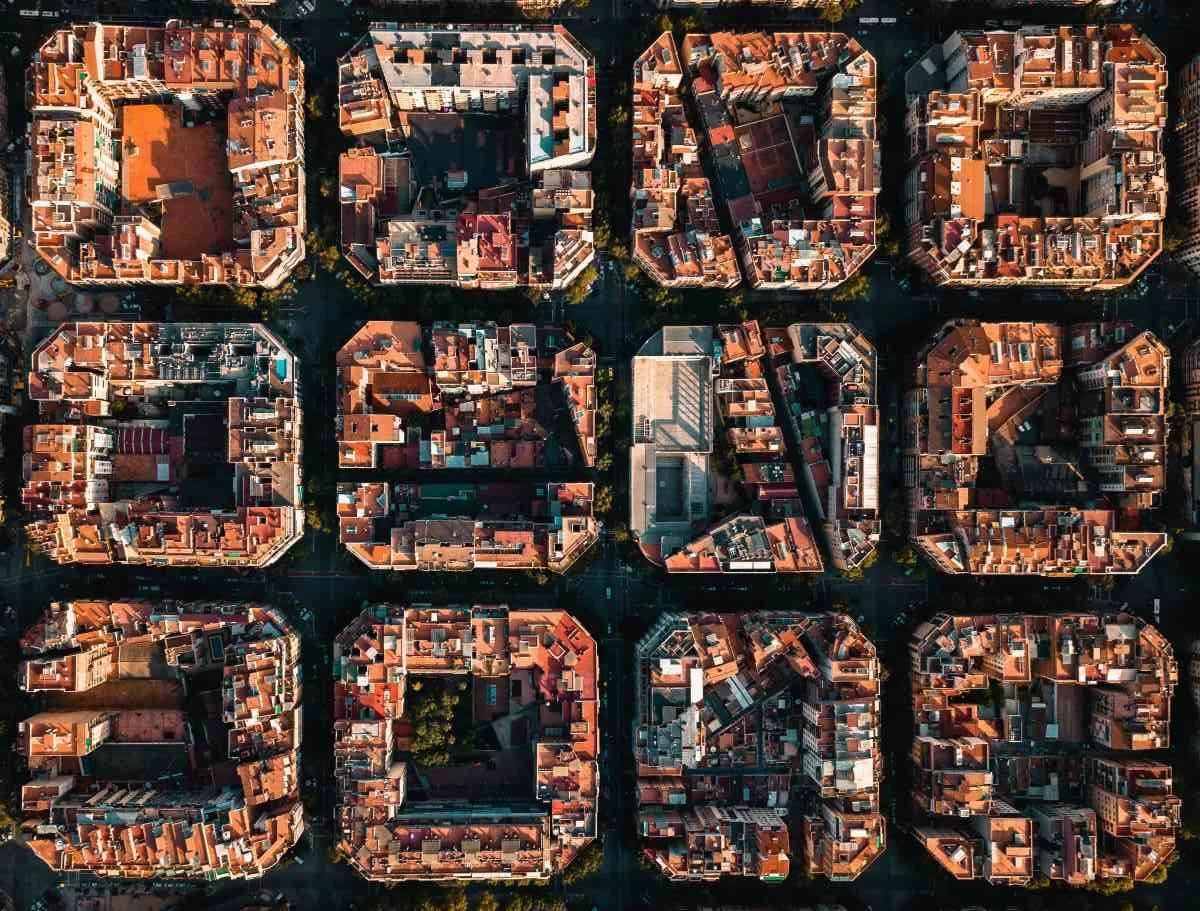
In the Philippines, where Spanish influence still echoes in the streets, modern Spanish architecture has evolved into a captivating blend of tradition and innovation. Here are some key features that define this style:
- Terracotta Roofs: The use of terracotta roof tiles imparts warmth and character to buildings. These tiles serve both functional and aesthetic purposes, offering insulation and a visual link to the past.
- Courtyards: Central courtyards or patios are standard features in Spanish-style architecture. These open spaces provide natural ventilation and serve as gathering areas, creating a sense of community.
- Arched Doorways and Windows: Arches are a hallmark of Spanish architecture, offering structural stability and an elegant, timeless appearance.
- Stucco Finishes: Smooth, white stucco finishes are prevalent, providing a clean and refreshing aesthetic. This finish reflects the Mediterranean origins of Spanish architecture.
- Wrought Iron Details: Ornate wrought iron railings, gates, and balconies add sophistication and artistic flair to buildings, enhancing their visual appeal.
Experience Modern Luxury at The Hermosa
The Hermosa, located in Las Piñas City near MOA and NAIA, represents a modern interpretation of opulent living and architectural design. While its inspiration leans more towards Italian aesthetics rather than a Spanish theme, it shares a kinship with the captivating blend of tradition and innovation often found in modern Spanish architecture. This premium condominium project exudes luxury through its sophisticated architectural design and resort-inspired amenities. Just as Spanish architecture seamlessly marries traditional elements with contemporary features, The Hermosa combines verdant landscaping with the conveniences of modern urban living, reshaping the concept of an upscale lifestyle. Its strategic proximity to MOA, NAIA, and esteemed educational institutions adds to its allure, contributing to its swift success in the southern fringes of Metro Manila. In the spirit of Spanish architectural endurance, The Hermosa stands as a symbol of timeless elegance and architectural excellence, and its delighted condo unit buyers can attest to its achievement in delivering a modern and grand living experience that transcends stylistic boundaries.
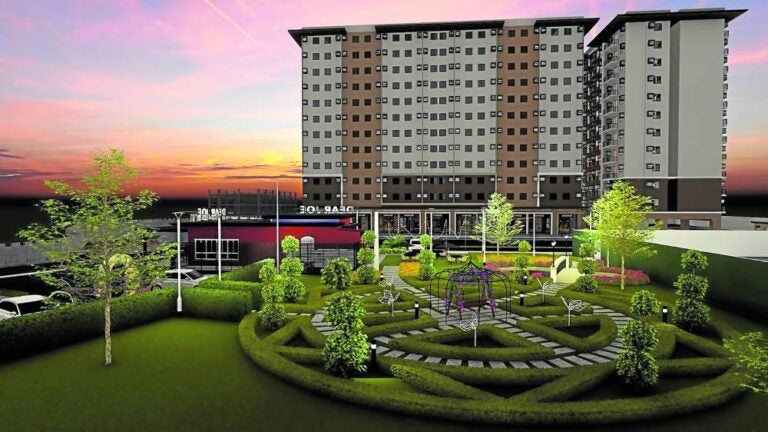
The Essence of Spanish Elements in Architecture:
Beyond tangible features, Spanish architecture embodies intangible elements that resonate with Filipinos. It evokes a sense of history, heritage, and nostalgia, transporting us to a different era. A well-preserved Spanish-era building serves as a time capsule, reminding us of our complex historical journey.
Spanish architecture, with its rich heritage and captivating style, has left an indelible mark on the world of architecture. From the historic Spanish Colonial buildings found throughout the United States to the ornate stucco walls of Spanish-style homes, the influence of Spanish architecture can be seen in the most iconic structures, such as the awe-inspiring Sagrada Familia in Barcelona. Some of the most famous architects, including Antoni Gaudí, have designed remarkable buildings in the Spanish style.
These structures, with their intricate details and use of terracotta roof tiles, exemplify the beauty and elegance of Spanish architecture. Whether exploring the history of Spanish missions, marveling at the 19th-century architectural gems, or simply enjoying the sight of white stucco buildings in the early morning light, one can’t help but be drawn into the world of Spanish architecture. It is a style that has stood the test of time and continues to be a vital part of the architectural landscape, not only in Spain but around the world.
Final Thoughts
In conclusion, Spanish architecture offers a rich blend of tradition and modern flair that’s truly captivating. Just like Spanish architecture, The Hermosa mixes nature with city living, creating a special place. Its location near important spots makes it even more appealing, and it symbolizes elegance and great design. Spanish architecture isn’t just about looks; it’s an invitation to explore a world where history meets innovation. So, take a closer look at The Hermosa and consider making it your home. It’s a chance to invest in a unique living experience that goes beyond ordinary styles.
Related Blog: World-Class Architecture: Italianate Styles and Structures


